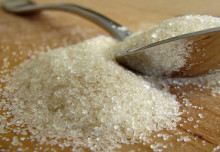The corn, or wheat, is a plant widely cultivated throughout the world; it can reach two meters in height and becomes golden when ripe.
Based on the data collected by U.S. Department of Agriculture, the major producers of wheat are the European Union, China and India, followed by the USA. These regions are at the same time also the biggest consumers of wheat. These data contrast with those of maize, the production and the consumption of which are concentrated in the U.S.
MAIN APPLICATIONS
Human consumption
Although wheat is second to maize in terms of global production, it is the main cereal and Food is a basic dish for many diets. Its main advantage as an ingredient is its extreme versatility.
Biocombustibili
The grain, along with other granules such as corn or soybeans, is used increasingly to produce biofuel.
WHEAT MARKET
The wheat futures are traded on several national and international stock markets. The contract on wheat traded on the Chicago Board of Trade will cover different types and varieties. There are also contracts that relate to specific varieties.
The factors that influence the price of wheat are:
Climate
It is a primary factor in the price of wheat. For example, excessive rainfall may alter some properties and, therefore, influences the use. However, wheat is one of the agricultural commodities more resistant to bad weather.
Economic Growth
The grain is a staple food or an ” inferior good ” in economic terms. When your income increases, people may prefer more refined foods.
Cyclical
As the grain has many applications in common with other cereals, such as corn and soybeans, the demand for wheat is linked to the demand for other cereals.
Demand for ethanol
With the increasing importance of biofuels as an end product of wheat, the price will vary.
Trade Policies
Trade policies may affect exports and imports, although the production and consumption remain similar.






 English
English Italiano
Italiano